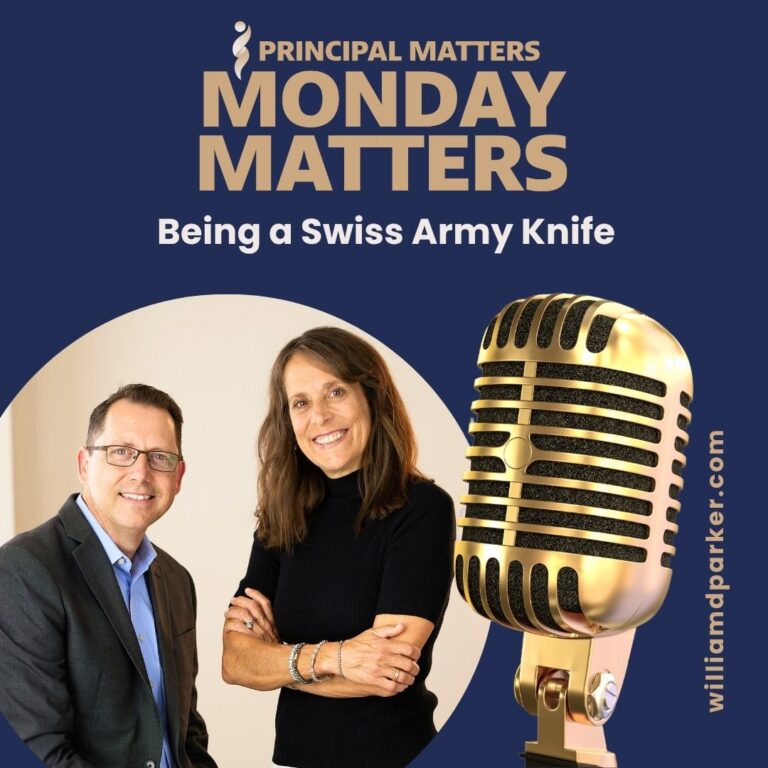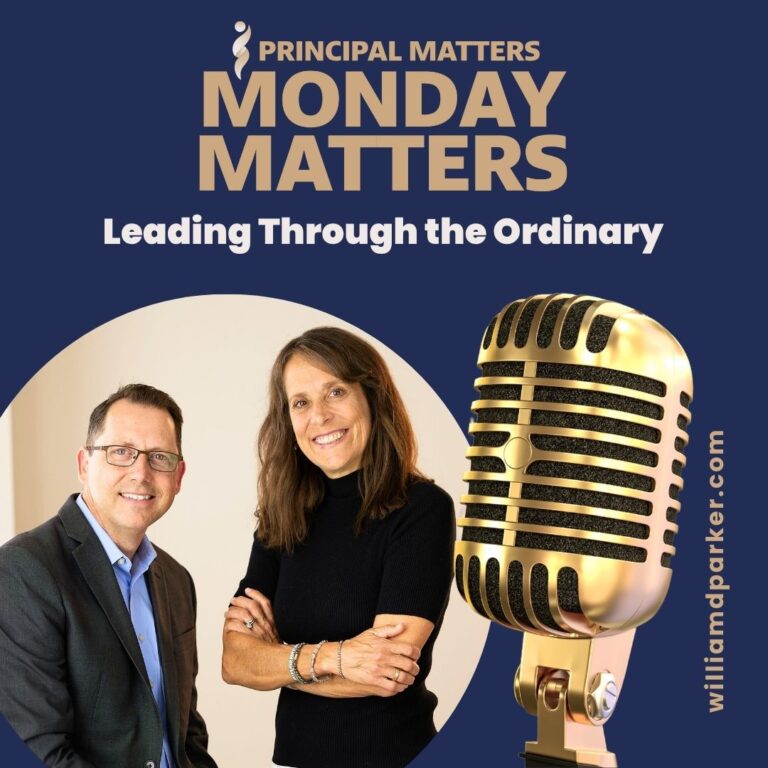Podcast: Play in new window | Download
I’ve been reading an excellent book by Tim Elmore and Andrew McPeak, Marching Off the Map: Inspire Students to Navigate a Brand New World, and it has sparked a lot of thought.
The first half of the book is what educators know intimately: the changing cultural trends in technology, relationships, politics, and information – and how these affect the ways students learn, think, grow, and behave.
Did you know, for instance, that the average attention span of today’s youth is 6-seconds? It is a challenging mission to reach children so pressed by distracting images, not to mention the social/emotional or intellectual challenges or issues students bring with them each day. Elmore covers many current trends and data on how youth today face challenges we adults never knew at their ages.
Changing Winds
The second half of the book is more application. Elmore and McPeak explore the question: How do we adjust and adapt so that as leaders and teachers we remain timely and timeless our work with others? In chapter five, Elmore uses a great analogy in the story of his niece who sails. She has been sailing all her life, and never once has he heard her complain about the wind or weather. She simply adjusts and adapts to meet the changes.
I’m not a sailor, but when I was in high school in college, I spent my summers diving for mussel shells in the Kentucky Lake area near our home in West Tennessee. Diving was a job that also required a lot of dependence on the weather. When I would dive, I would attach my line to the boat because I did not float and swim like a tank-diver. Instead my air tank was in the boat, and I would be attached to it by an air hose and rope while crawling along the bottom of the lake searching for shells. If the winds were low, my task included pulling the boat along with me. If the winds were high, the boat would often pull me along instead. The wind often dictated which terrain, depth, or direction would be chosen.
Often when people face resistance or change, they react as Tim Elmore explains:
1. Complaining about the state of our present reality
2. Giving up and leaving the journey all together
3. Adapting
Adapting doesn’t necessarily mean compromising on what we believe is essential and true. Instead it means we stay open to learning, to growing, and to innovating. Sometimes our schools can be like boats in an ocean or lake. We are responsible to navigate the channels ahead, but we have no control over the weather or unexpected challenges.
I am becoming more convinced that adaptability is a common strength in all examples of great learning, teaching, and leading. And as I visit schools across my own state and as I travel throughout the country, I have realized that adaptable school leaders seem to have a combination of innovation, entrepreneurship, and organizational leadership.
Two School Leadership Examples
#1 Guthrie High School
Let me give you some examples close to home. A couple of weeks ago, I visited the Guthrie High School, just north of Oklahoma City. Principal Chris LeGrand and Assistant Principal Dusty Throckmorton gave me a tour.
With approximately 1,000 students, Guthrie is a combination of bedroom community for Oklahoma City as well as a community of many working-class families. The buildings are older but well-maintained. As traditional as their school appears, the learning options there are far from traditional. Yes, students have the core subject offerings, electives and Advanced Placement offerings you would expect from a high school. But they also have many offerings for students interested in non-traditional options.
For instance, Guthrie offers college courses on campus with adjunct professors who travel to the high school to teach. Students can take Biology, for instance, from a college professor who offers the course in a Guthrie High School classroom and provides students the option of both a high school credit or a community college credit for the same course work.
Guthrie offers other concurrent college classes that are set up in consortium with other off-site campuses. In these settings, students see professors via computer cameras and participate in class discussions and learning via video-chats.
Some students at Guthrie blend their days with traditional classes while also attending off-campus career courses. And Guthrie also has a full-time lab for those who choose to take all their courses via online options.
As we walked through Guthrie’s practice gym, student leaders had organized a blood drive with the local Red Cross. It was a warm day, and the practice gym was without air conditioning. But students, teachers and volunteers were smiling and helpful. As we walked the building, both administrators would stop for chats with students, give encouraging high-fives, or point out the great samples of student artwork on display.
When I spoke to Principal Chris LeGrand, he explained that over the years, they have consistently found ways to change, adapt, or modify course offerings to meet the needs of students in both traditional and non-traditional settings.
#2 John Marshall High School
Guthrie High School is not alone as a school that embraces innovation. Another example comes from John Marshall Mid-High School in Oklahoma City. A Title I school with an urban population, when I visited John Marshall, I admired the new buildings on a campus that opened ten years ago after the original school location closed. Like Guthrie, John Marshall feels safe and welcoming.
As I walked the school with Principal Aspasia Carlson, she explained how her school has developed several innovative programs for students. Once a school with only one Advanced Placement course, the school now offers thirteen A.P. classes. In addition, every senior is assigned to a local business person whom they job shadow once a month throughout their final year of high school.
Another amazing program includes a partnership the school has with Tinker Federal Credit Union, which houses a branch in the school that is run by student employees. I saw the area used for the bank, and it is impressive to see how a school can transform space into a business setting.
John Marshall also has a program that involves community outreach. Each year, student volunteers learn to file taxes, and community members come to the school each spring for evening sessions where students help them file their taxes.
Washington D.C Awards
Last week I had the privilege of seeing Principal Carlson awarded Oklahoma Principal of the Year in a ceremony with the National Association of Secondary Principals in Washington, D.C. As she visited with elected officials and policy makers, they were impressed and often surprised at the options and opportunities available at her school.
How do these examples like Guthrie High School and John Marshall Mid-High School affect the work you’re doing in school leadership this week?
Remember that strong school cultures do not happen overnight. They are the result of years of people investing in people. They are the result of constant adaptation to the needs of students in a changing world of opportunities.
Let’s Wrap This Up
One day when I was diving for shells during college, I felt a strong pull on my line attached to the boat. When I pulled myself to the surface, I realized the waves were high because a storm was approaching. The clouds were already dark and covering the sun. I didn’t’ curse at the wind, shake my fist toward the sky, or lay down in the bottom of the boat and wait with fear for the storm to hit. Instead I pulled all my gear into the boat and headed for land so I could anchor the boat and wait out the storm.
Every day school leaders face one kind of storm of another. This past week, for instance, our state legislature has been meeting to decide how to remedy another budget shortfall that may affect school funding. At the national level, I sometimes hear policy makers focusing on examples of where public schools are failing.
When school leaders have serious challenges to overcome, I think about the choices mentioned earlier from Tim Elmore’s book, and I rephrase them like this:
1. A leader can complain about the obstacles.
2. A leader can throw up his or her hands or give up finding solutions.
3. A leader can keep adapting.
Examples of innovative, adaptive, and effective schools are all around us. Even in the midst of challenges, obstacles and changing winds, will you choose to keep adapting? Keep taking your inspiration from principals making the courageous choices. When you do, I believe you will be an inspiration for your students, teachers, and communities about what is possible for students in a fast-paced, unpredictable, but ever-promising world.
Now It’s Your Turn
What is a challenge or obstacle you are facing right now? How can you surround yourself with others who think creatively about solutions? Don’t be afraid to adapt and change by finding innovative solutions for your students and schools.
Sign-Up For Free Updates and Ebook
When you enter your email address here, you will automatically receive my newest posts and a free Ebook, 8 Hats: Essential Roles for School Leaders. Let’s keep learning together!
Principal Matters–The Book!
School leaders are very busy, so each of the twenty-four chapters is designed as a quick-read and followed with take-action questions for follow-up or reflection. If you want practical ideas on understanding your purpose, managing school teams, dealing with challenges, and leading with courage, action, motivation, and teamwork, go HERE to pick up a copy for you or your team.
Messaging Matters
Harness the power of messaging to create a culture of acknowledgment, respect, and celebration. Written specially for leaders, this title is divided into three parts, helping readers to maximize their role as chief communicators with students, teachers, and parents and community. Each chapter includes suggestions for using digital tools to enhance messaging and ends with reflection questions and practical next steps.




